How I Learned SEO in the Fastest Way [7-Step Guide]
Fahim
January 13, 2024

I worked as an SEO specialist with a Facility Management Engineering and Networking Company for two and a half years.
While this might seem like enough time to become an expert in SEO, I didn’t feel like I learned much until I started my own project.
Not having our own project is a common mistake for SEOs, as I’ve mentioned in my article about mistakes to avoid for a successful SEO career.
However, when I gave myself three months to improve my SEO skills, I found success.
My website now ranks on the first page of Google search results for keywords like “electrician local SEO agency” and “electrician local SEO company”.
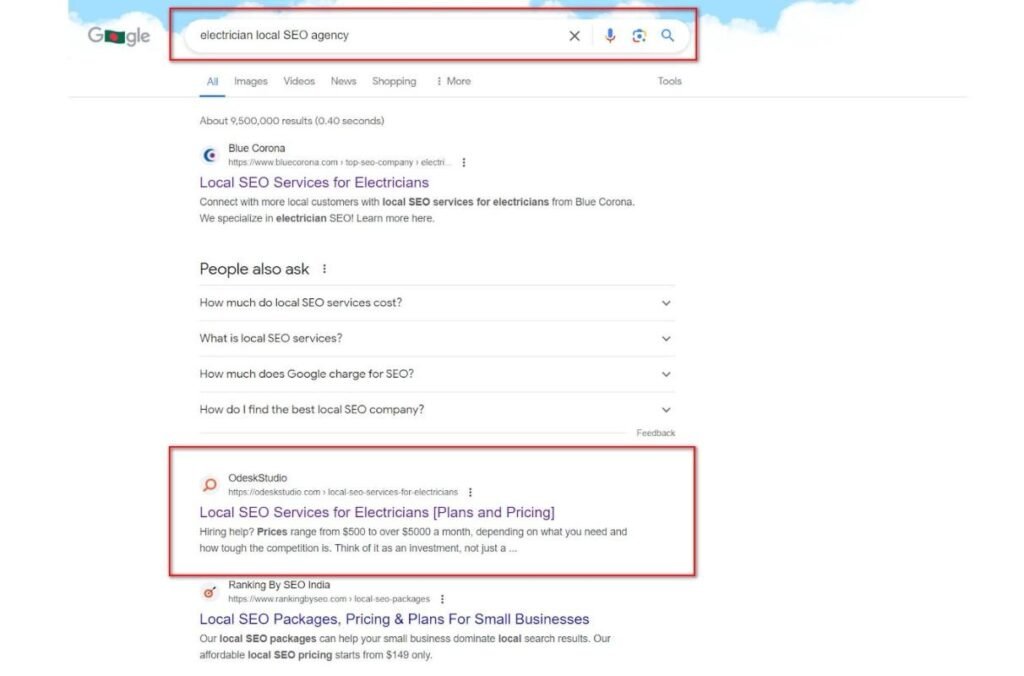
I’ve condensed my journey into seven steps that are the quickest way to become an SEO expert in 2024.
These steps have been tried and tested by me, and now I’m sharing them with you.
So, what are you waiting for?
Let’s get started!
Step #1: Basic SEO Knowledge
We’ve probably heard the idea that we don’t know what we don’t know.
And this is true in SEO.
If we don’t know the terminology and the basic concepts, we won’t be able to diagnose our SEO performance.
So, here are the most important pillars of SEO:
- Crawling,
- Indexing,
- and Ranking.
Google must be able to crawl our website.
Otherwise, it can’t index our pages.
And if it can’t index our pages, our pages can’t rank.
This is the most important part of the SEO process because without it, nothing else matters.
So, I recommend downloading free Detailed SEO Chrome extension to see if our pages are crawlable and indexable at a glance.
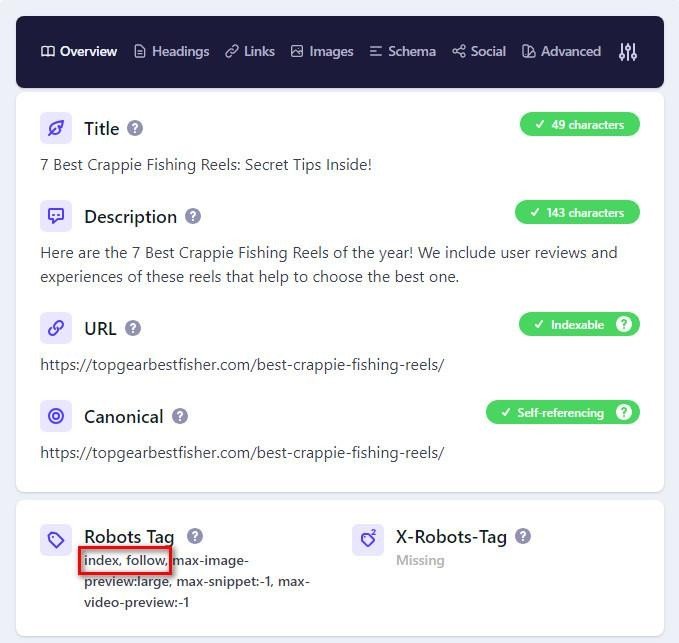
We can also go into Google Search Console and see how well Google is crawling and indexing our site.
- Go to Indexing,
- click on Pages,
- scroll down to the section that says “Why Pages aren’t indexed“,
- and we can then click through on any of these issues to investigate further.
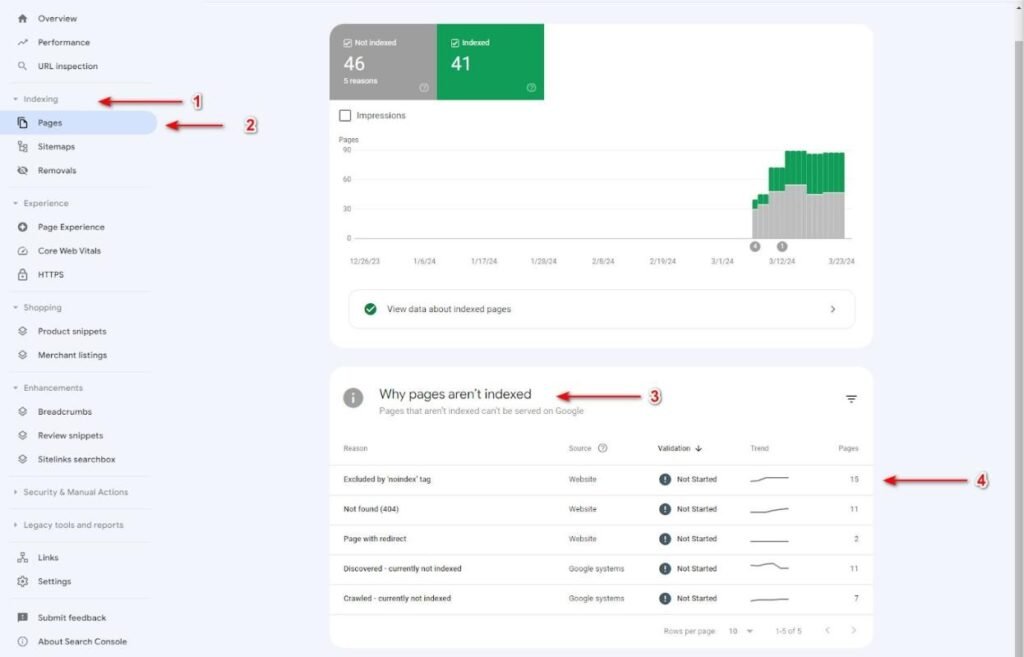
Keep in mind that we don’t want every page indexed in Google.
Some pages to keep out of Google’s index are
- Login Pages,
- Checkout Pages,
- and Archive Pages
Step #2: Keyword Research
Now, as of right now, we still use words to search.
And maybe we’ll think it into existence at some point.
But even then, it would still require words.
Keywords are simply how we find our websites.
But the truth is that most of us don’t understand how to do proper keyword research.
And it comes from not understanding one core principle of keyword research, which is Search Intent.
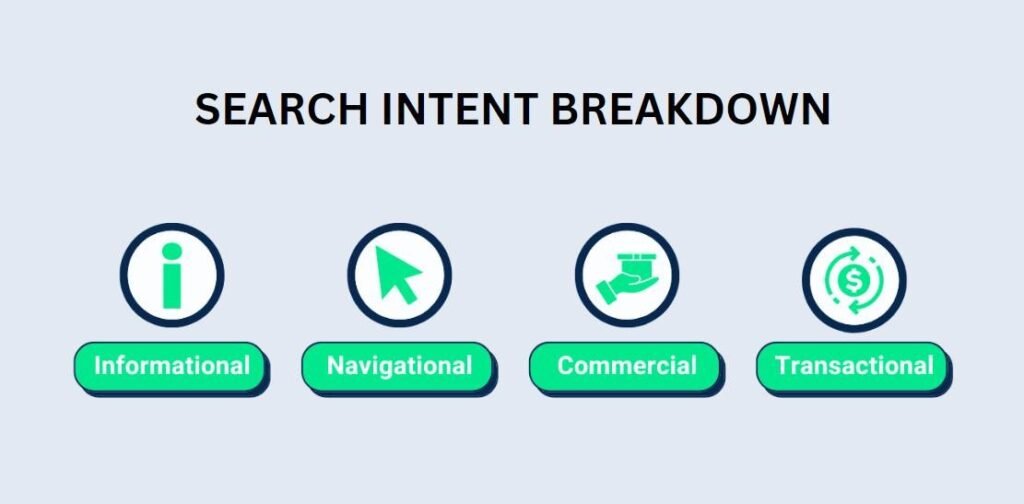
Understanding search intent will save us tons of wasted effort and time going after keywords that won’t produce a return on investment.
Also, if we understand it, we’ll know what type of page to build to satisfy the intent of the keyword.
In other words, the intent of the keyword should dictate our content strategy.
So, what is search intent?
It’s simply what a searcher wants to achieve when using Google.
By understanding the searcher’s end goal, we can deliver the perfect page for them.
Step #3: Technical SEO
Technical SEO isn’t as scary as it might sound.
I have elementary coding skills and have driven SEO results for a good few websites.
We don’t need to be super technical to get SEO results; we just need to know what to look for.
So here are two high-impact technical SEO opportunities we need to look for in every campaign.
#1: Page Loading Speed
Core Web Vitals is a confirmed Google ranking factor, so we must take it seriously.
Plus, our site’s loading speed is critical for conversions.
In fact, according to Google, a one-second website speed improvement can increase conversions for mobile users by up to 27%.
For a quick page speed analysis, we recommend using Google PageSpeed Insights or GTmetrix.
For more comprehensive analysis, we can use Google Search Console or integrate Screaming Frog with the Google PageSpeed Insights API to see our scores across our entire website.
If we’re not scoring well, we should prioritize fixing it because it’s a factor that is within our direct control.
#2: Site Architecture
To keep it simple, site architecture is based on our internal linking strategy, and there are three core elements for optimizing site architecture.
A. Crawl depth
We can use Screaming Frog and simply look under the crawl depth column.
We should aim to have all pages no more than three clicks deep.
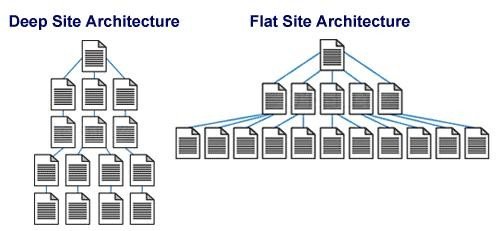
In short, the deeper our pages are into the architecture, the lower priority they have, and Google will follow suit and crawl these pages with much less frequency, and some may not even get indexed if they’re too deep into the architecture.
B. Internal link coverage
Like crawl depth, the quantity of internal links is important for a page.
Therefore, we should drive more internal links if we want a page to perform better.
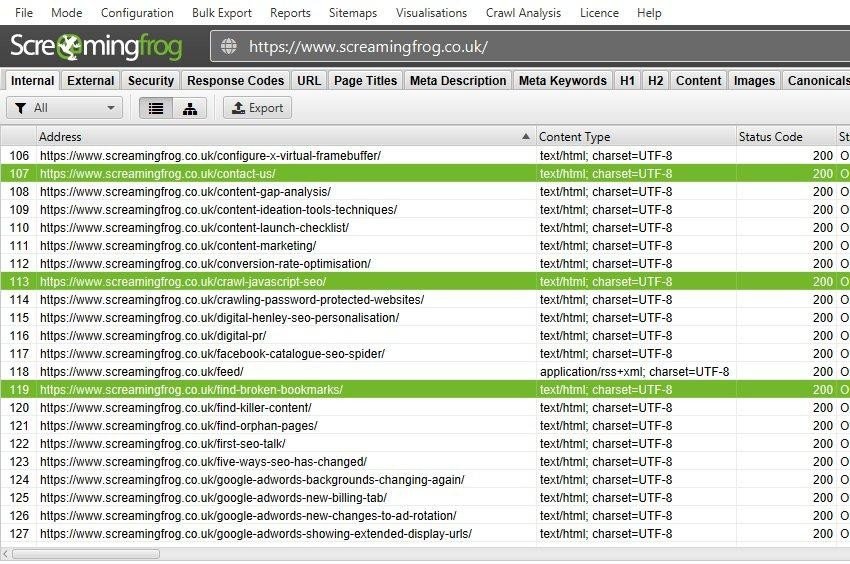
Just look under the unique in-links column in Screaming Frog to see what pages need more internal link love.
C. Internal Link Anchor Text
Google has confirmed that using descriptive anchor text is best for internal links.
That means it’s wise for us to go through and optimize our internal link anchors.
For example, we shouldn’t use generic anchor text like “this article” for our internal links.
Instead, we should use exact match or partial match anchors with all of our internal links.
For example, if we want to link to our article about best fishing tools, we will use “best fishing tools” as the anchor text.
Now, keep in mind that this rule does not apply to link building.
We need to be much more careful when it comes to external anchor texts during our link building efforts.
Step #4: Content
So, we can do all this other stuff well, but without the right SEO content strategy, we won’t get the results we want.
Now, there are two types of SEO content we need to know.
#1: Keyword-Focused Content
This is any page that is built around a dedicated keyword phrase.
We recommend eighty percent of our site’s content fall into this category if we want more organic traffic from Google.
#2: Non-Keyword Focused Content
Some examples include “Reversed Engineered Content/Tools” like the Free Website Audit Tool we created for our SEO agency.
Although it does target a keyword, its primary purpose is to serve as a backlink generator for our website.
#3: SEO Content Creation Strategy
Now, we could dedicate hours to this topic of SEO content creation, but we’ll share some evergreen principles.
A. Satisfy The Intent But Be The Purple Cow
Seth Godin created the concept of the Purple Cow, and in the context of SEO, we want to be the result among the top 10 in Google that stands out.
The key to achieving that goal is finding a content angle that hasn’t been used.
For example, if every ranking result is a list post, we should attack it from a different angle like a case study.
For example, recently I shared a post on the “Best Niche for Blogging with Low Competition”.
Unlike others, I’ve backed up my claim why they are the best niches through research and case studies.
B. Build a Moat
In short, our content should be so unique that it’s difficult for a competitor to replicate.
Our go-to method for achieving this goal is unique data and exceptional design.
In short, the more we invest in our content from a time and capital perspective, the harder it will be to replicate.
Step #5: On-Page SEO
So, at a bare minimum, we should place our exact keyword phrase in our URL, title, meta description, H1, first sentence, and last sentence.
We should also consider adding a variation of our primary keyword in the first H2 tag.
This basic optimization will put us ahead of 80% of websites.
But if we want to take it to another level, we should optimize for NLP or natural language processing.
NLP, or Natural language processing combines computational linguistics—rule-based modeling of human language—with statistical and machine learning models to enable computers and digital devices to recognize, understand and generate text and speech.
We can use a tool like Surfer to accomplish this goal.
Just throw our keyword into Surfer’s surf analyzer and run our page through the tool.
Then review their NLP recommendations and look for opportunities to add these keywords to our content.
Sometimes we’ll need to add some additional content to support these ideas.
Step #6: Local SEO
So, everything we’ve learned so far will improve local rankings, but some variables are specific to Google’s local pack.
So first, what is the local pack?
The section above the traditional organic results we’ll see when we conduct searches with local intent like “dentist new york”.

And to rank in this local pack, we’ll need a couple of things.
A. Having Address in the Target Location
So, if we want to rank in New York.
We need a New York address.
B. Google Business Profile
We secure our Google Business Profile and populate it with relevant information.
Include keywords in the business description like “orthopedic dentist new york.”
C. Review Management
We get as many reviews as possible because they’re the key to local pack rankings.
D. Consistent NAPW Information
We make sure our NAPW information is consistent.
NAPW simply stands for name, address, phone number, and website.
And this information must be consistent across all structured and unstructured citations on the internet.
We can use Bright Local’s free citation audit tool to see our existing listings and which ones we still need to build.
Step #7: Link Building
Backlinks, which are links from other websites, are the difference maker in SEO.
And Google uses backlinks as votes for our website.
So, the more votes we have from high-quality relevant websites, the better we’ll perform in Google.
And Backlinko studied 11.8 million Google search results and found that a site’s overall link authority strongly correlates with higher search engine rankings.
Now, the question is, how do we get more high-quality backlinks?
Well, there are many techniques we can use, but the most scalable and reliable technique is creating value.
We need to build assets and things that people want to link to, and that includes extremely high-quality content or free tools.
Content should be the foundation of our link-building strategy.
In short, our content should deserve backlinks.
So, we start with content and then work to promote it like crazy.
And that means we’re going to use our own assets like our email list and social media.
And then use traditional link-building techniques like guest posting, getting interviewed, or even HARO.
We also recommend using Ahrefs’ Link Intersect tool to see where our competitors have scored backlinks.
So, we go to competing domains and enter our biggest competitors into Ahrefs’ Link Intersect.
Now we know what websites we need to get links on.
So, if you learn anything from this article, please understand: the fastest way to learn SEO is to take action.
Spend eighty percent of your time doing the work and twenty percent of your time studying.
You already know enough to get started with SEO right now!
Please like, share and follow for more.
Recent Posts
Have Any Question?
If you have any question, please feel free to contact me through any of the social media. I will be replying in no time.
